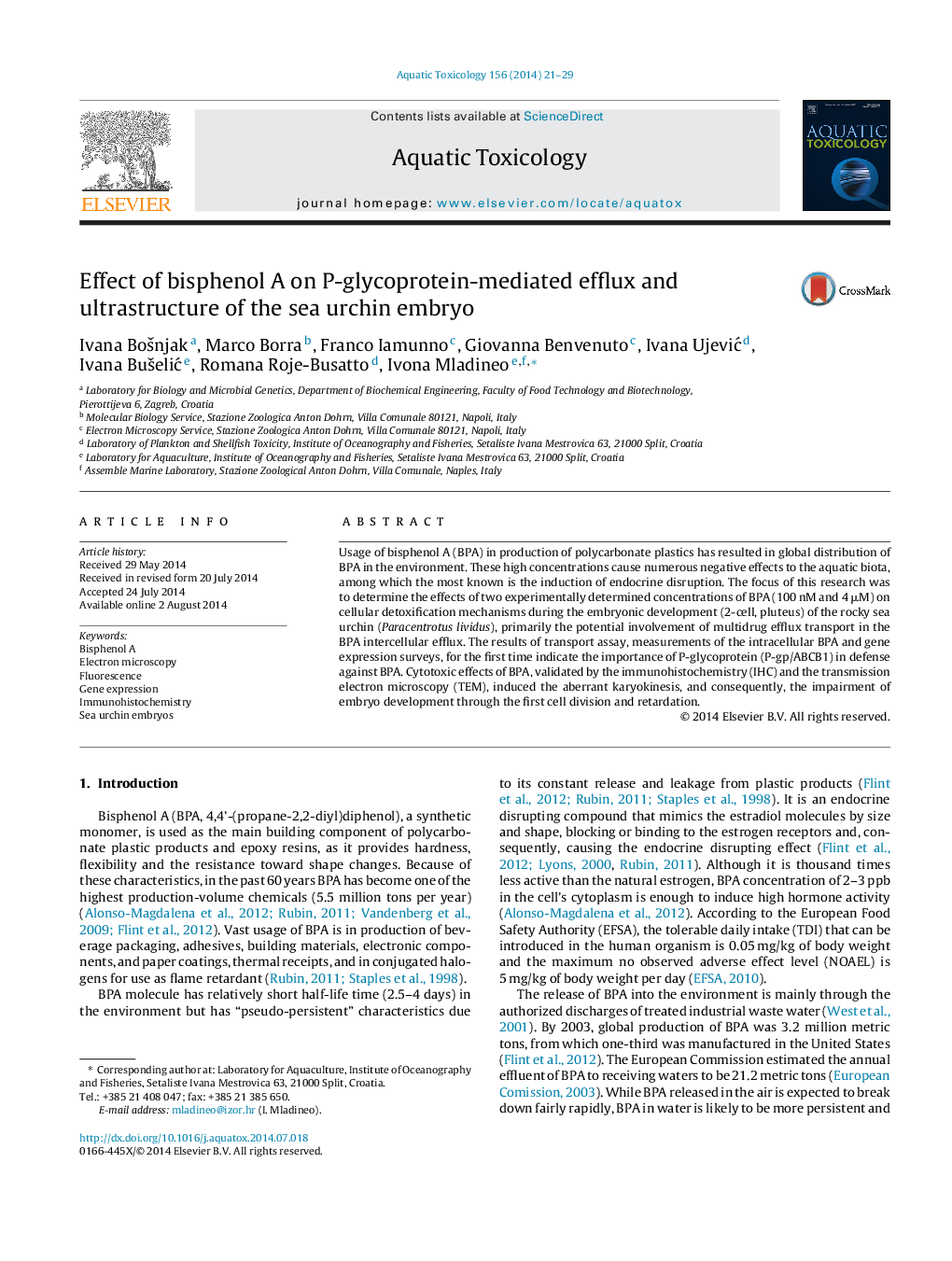| Article ID | Journal | Published Year | Pages | File Type |
|---|---|---|---|---|
| 4529121 | Aquatic Toxicology | 2014 | 9 Pages |
•Effects of BPA on embryonic development of Paracentrotus lividus were determined.•Transport assay, intracellular BPA measurements and gene expression surveys were made.•Multidrug efflux transporter P-gp/ABCB1 is involved in BPA elimination.•Endocrine disruption is inferred by orphan steroid hormone receptor (shr2) upregulation.•BPA delayed mitosis, inducing aberrant karyokinesis and dysfunctional microfilaments.
Usage of bisphenol A (BPA) in production of polycarbonate plastics has resulted in global distribution of BPA in the environment. These high concentrations cause numerous negative effects to the aquatic biota, among which the most known is the induction of endocrine disruption. The focus of this research was to determine the effects of two experimentally determined concentrations of BPA (100 nM and 4 μM) on cellular detoxification mechanisms during the embryonic development (2-cell, pluteus) of the rocky sea urchin (Paracentrotus lividus), primarily the potential involvement of multidrug efflux transport in the BPA intercellular efflux. The results of transport assay, measurements of the intracellular BPA and gene expression surveys, for the first time indicate the importance of P-glycoprotein (P-gp/ABCB1) in defense against BPA. Cytotoxic effects of BPA, validated by the immunohistochemistry (IHC) and the transmission electron microscopy (TEM), induced the aberrant karyokinesis, and consequently, the impairment of embryo development through the first cell division and retardation.
